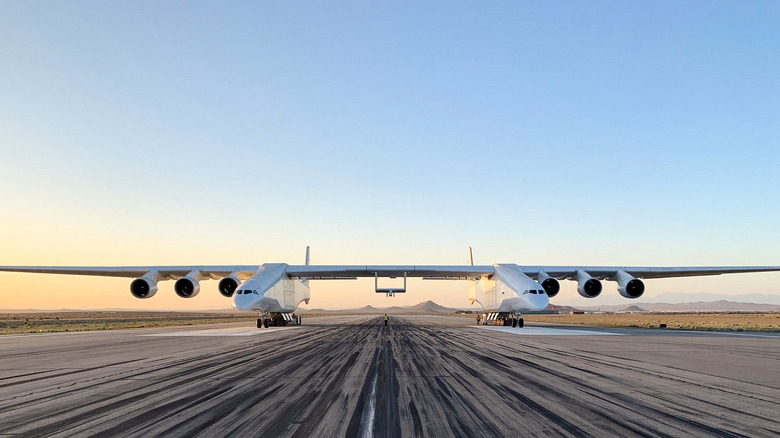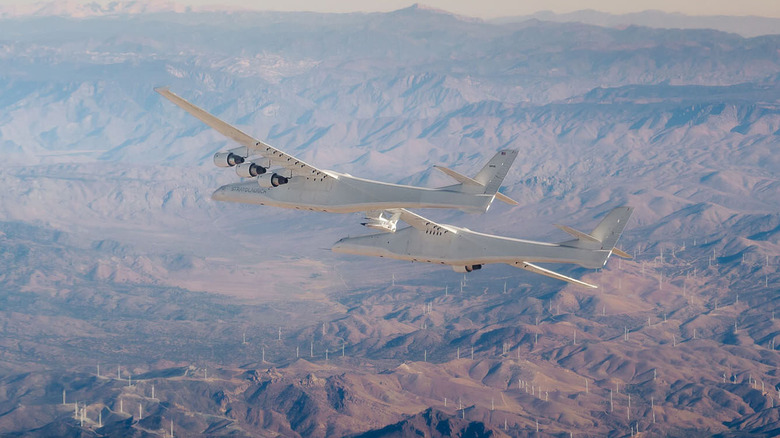Why Does The Stratolaunch Roc Jet Have 2 Cockpits?
The huge wingspan of the Stratolaunch Roc makes it one of the world's biggest jets, but it's not just its sheer size that makes it unique. It's also the fact that, at first glance, the plane looks like two conventional airplanes joined together. It isn't, but it does borrow parts from another aircraft. Stratolaunch used parts from a Boeing 747-400 to build the Roc, using not only its flight deck and landing gear, but also its engines. The Roc's unusual design is the result of its unusual intended use, which was initially to launch satellites into space from the air rather than from the ground, as is traditional. After the death of the company's founder, the billionaire Paul Allen, in 2018, Stratolaunch pivoted away from satellite launches and towards hypersonic aircraft testing, with defense contractors reportedly being its main clients.
Hauling satellites or hypersonic aircraft into the air requires huge amounts of power, which is why the Roc has six 747 jet engines stretched across its 385 foot wingspan. It results in the aircraft being able to accommodate a payload of up to 500,000 pounds between its two fuselages. At the front of both fuselages is what appears to be two cockpits, although only one of these cockpits is crewed.
Why the Stratolaunch Roc only has one crewed cockpit
The Roc's crew of three people all sit in the starboard side cockpit, which is on the right hand side of the aircraft from the pilot's perspective. The port side, or left side cockpit remains mostly empty when the aircraft is in flight. The only things inside the second cockpit are generators, which produce electric power. Stratolaunch ended up deciding to make the two cockpits on either side look the same as both needed to be pressurized during the flight, and mirroring them cut down on development complexity.
The three crew members in the starboard cockpit are the only crew that accompany the aircraft up to space, since the Roc's most recent payload, the Talon-A2 prototype hypersonic aircraft, is uncrewed. The uncrewed prototype was launched twice in December 2024 and March 2025, reaching hypersonic speeds on both occasions. However, other manned hypersonic flights might be possible in the future, with Stratolaunch previously claiming that it was expecting to accommodate civilian hypersonic aircraft that could be used to transport crew or cargo.
Ultra fast hypersonic flight might never become accessible to the average flier thanks to its cost and complexity, but continued interest from the defense industry should mean that the Roc and its unusual cockpit layout will still be in demand over the coming years.

